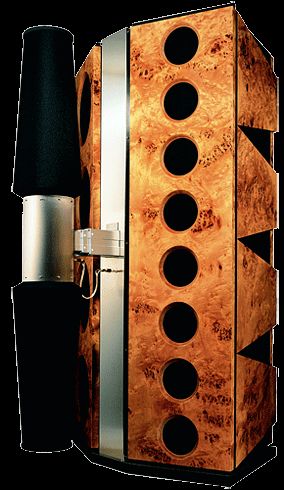Going back to the 1st post of the thread.....Yes, a speaker can overload a room quite easily in some cases. In my experience, you do not ever want this to happen, it masks too much of the detail and extension you paid so dearly to hear in the first place. While speaker placement and gear can make a dramatic improvement, along with volume control, it may just be something as simple as an interconnect.
Allow me to explain. I have a pair of Tyler Acoustic Signature Series speakers that most folks would think that they would easily overload the room. Well they did and for years, it was tamed by the volume knob. No amount of speaker adjustments, tweaking or furniture moving did the trick and I already had spikes. Honestly, I thought that it was just the room acoustics/size/shape that was causing it and that I just had to put up with it until I built another listening room or we moved.
I was very pleasantly surprised lately when I moved up the ladder with regards to a Transparent interconnect. Went from the Music Link Plus to the Music Link Ultra between my Dodd pre and the Musical Fidelity amplifier. The very first thing I noticed was a lower extension I hadn't heard so prevalent before. I immediately turned off the subs, only to find out that the rig actually sounded better without them and that they could still dig as low with more visceral impact, weight, speed and all out authority. One thing was missing though...
That was the overloading of the room. Where the speakers use to start overloading [recording dependent] at 8:00 to 9:00, they have no overloading characteristics until you reach a volume level approaching concert levels now. It makes listening more pleasurable because the spectrum of available volumes were greatly increased due to the loss of the overponderance of the mid bass and bass registers. It really is amazing how much the overloading of a room masks what your system might have the potential to do.
While this may not be the case for everybody, it was the case in my house with the rig I currently own and enjoy tremendously. I'll put it to you this way, I was so pleased with the end result as to what hits my ears now, I have purchased a Transparent Reference IC for that spot and another one will be installed soon between the CDP and the Dodd.
I guess what I'm trying to say is yes, a speaker can overload a room. Unfortunately, in my experience, this happens more often than it should but it may not be a speaker in relation to room size, it may just be an equipment or synergy issue that's causing the overload. Just food for thought














